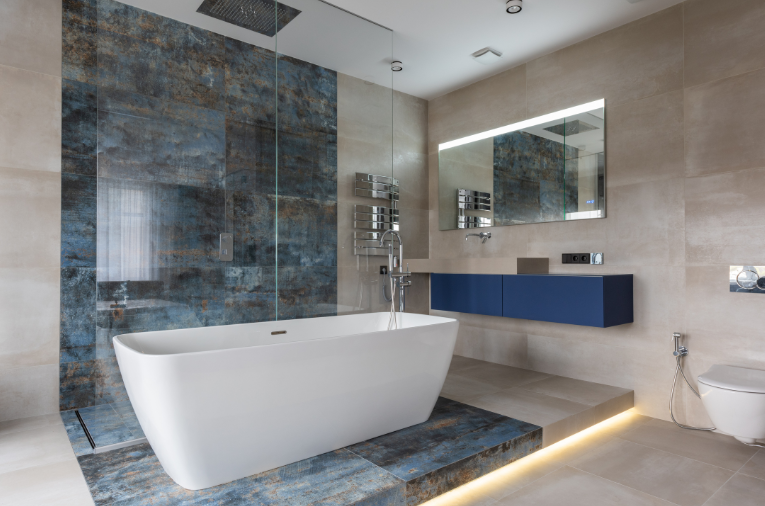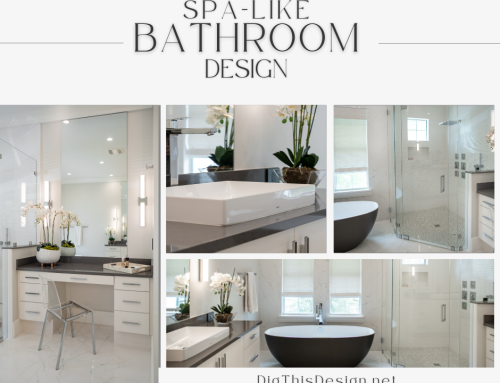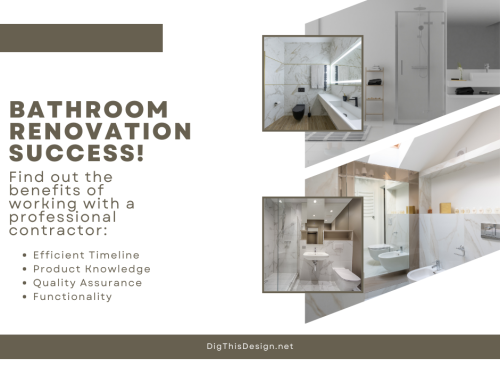Bathtubs, despite being used much less frequently than showers, remain a staple in many homes. However, not everyone wants or needs a bathtub, which is why you’re wondering whether or not to add one to your bathroom remodel.
In half-baths or bathrooms too small for bathtubs, a shower will do just well. Additionally, showers are becoming more and more popular in place of bathtubs. But if you do not have a bathtub, you will miss out on a lot of benefits that come with owning one, such as having a relaxing soak. Here are some facts to help you determine whether or not to include a bathtub in your bathroom renovation.
Why Bathtubs Are a Good Choice for Homes

You’ll Boost the Look of Your Bathroom
A bathtub’s capacity to create a chic and appealing environment is one of its best features. A shower just does not have the same aesthetic appeal as a bathtub. Bathtubs can become the center of attention. Nowadays you can find stylish baths with sophisticated designs, like for instance, freestanding.
Freestanding baths are well-known for their standalone design and beautiful aesthetics, which give your bathing experience an opulent touch. Their design instantly draws attention to any bathroom. With a variety of options, you can mix and match your tub with modern, traditional, or stylish styles with ease.
Selecting a tub with decorative elements, including distinct colors, claw feet, or unique fittings, will improve the look. The bathroom is supposed to be a place to relax and soothe yourself, and this can be much easier when the environment is more appealing.
Increased Home Resale Value With Bathtubs
Most real estate brokers will tell you that purchasers prefer homes with at least one bathtub. This particularly true for luxury homeowners seeking a home with several bathrooms and young families with little children. This implies that having a bathtub in the home is crucial for potential buyers.
Pain Relief
You may be surprised to learn that most of the aches and pains that cause you to slow down each day can be relieved with a hot soak. Blood arteries dilate in response to heat, improving blood flow to the injured area. This aids in pain relief and encourages healing. Soaking in a hot bath with a few drops of your favorite essential oil also encourages relaxation, which helps to relieve muscle tension that may be causing your pain.
You will value the respite bathtubs provide whether you take a bath daily for chronic pain or only sometimes for acute ailments.
Makes It Easy for Bathing Small Children and Pets
Parents view bathtubs as one of the easiest ways to bathe young children and pets. Youngsters under the age of eight find it challenging to use a shower. Moreover, bathing multiple children at once is more efficient in a bathtub.
When the weather allows, you’ll certainly want to wash your pet outside of the house. When doing it inside, bathtubs usually are the best option. Many pet owners find it useful to use a tub basin to contain the animals and the mess that they make.
Also Suitable for Small Bathrooms
It’s not because your bathroom isn’t very spacious that you have to give up the bathtub. Bathtub options such as built-in, corner, and asymmetrical allow you to maximize your space. These tubs take up significantly less room than standalone tubs while providing the same level of elegance.
Only in very tiny bathrooms should bathtubs be replaced with a shower. However, before making a decision, it is recommended that you measure carefully and keep in mind that bathtubs do not have to be large to be enjoyable.
Once you’ve decided that you want to keep the bathtub, it will be time to find the right one for your bathroom. For that, there are some considerations you’ll have to make.
Which Shape?
Bathtubs are available in a wide range of shapes, all of which will create a different impression in the room. Curvaceous tubs provide a nice contrast to the straight lines of a boxy room, and they are a smart choice for a tiny bathroom because they take up less visible space, as do ones that sit off the floor on feet.
Squarer forms, on the other hand, provide contrast to arched windows and give a room a more contemporary air; however, they are visually bulkier and hence better suited to larger areas in general.
In addition to considering how the silhouette of the bathtub impacts the room, you will also consider the impression it causes. Oval and round-shaped bathtubs are frequently considered the most comfortable to luxuriate in since they provide more space, but the bath’s size and height must also be considered.
Which Size?
Tubs for sale are typically 1.5 cm long, 76cm wide, and 30+ cm tall. Compact sizes, available in both freestanding and built-in designs, are often just under 1,50cm, with even smaller sizes of just over 1,20cm. Which size of bathtub to choose is a very personal thing and will depend on whether you like to sit up to read a book or prefer to recline.
Some larger models measure up to 2 meters in length, so it may be worth visiting a showroom and trying the bath for size and comfort. Just make sure to consider the available space in your bathroom and the difficulty level of maneuvering the tub into position, especially if your bathroom is at the head of a winding staircase.
Which Material?
There are approximately eight basic bathtub materials to pick from, each of which varies in look, weight, and cost. The most affordable option you’ll find is acrylic, but it’s also the least durable. Steel is both affordable and solid, offering the best value for money. For a bold style statement, choose a cast iron or copper bathtub.
Some people get concerned that a heavy bathtub, such as those built of stone or cast iron, may require the bathroom floor to be reinforced, although this is usually not the case. A bathtub full of water and a bather weigh approximately four people. So, if you’re fine with four people standing in your bathroom without fear of falling through the floor, you can have a cast-iron bathtub.
In conclusion, whether or not to include a bathtub in your bathroom renovation is a decision that hinges on several factors. While showers offer practicality and are increasingly favored, bathtubs bring undeniable benefits that shouldn’t be overlooked.
Not only do they enhance the aesthetic appeal of your bathroom, but they also contribute to increased home resale value and offer therapeutic benefits, such as pain relief and relaxation.
Furthermore, bathtubs facilitate bathing for small children and pets, and with various space-saving options available, they can even be accommodated in smaller bathrooms. When considering the shape, size, and material of your bathtub, it’s essential to prioritize your preferences and needs while also keeping practical considerations in mind. Ultimately, investing in the right bathtub can elevate your bathroom experience and add lasting value to your home.
Other posts you might enjoy:
Bathroom Design: Refinished Bathtubs for a Stylish Makeover





